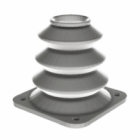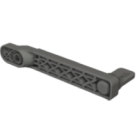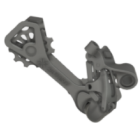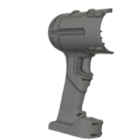What is resolution in 3D printing?
The term “resolution” in 3D printing is often misunderstood — and yet it’s one of the most important parameters affecting the look, feel, and function of printed parts. When someone asks, “What does resolution mean in 3D printing?”, the answer isn’t as simple as “higher is better.” Like in digital imaging, 3D printing resolution affects detail — but in three dimensions, and across multiple axes.
In this section, we’ll unpack the real 3D print resolution meaning, how it’s measured, what it influences, and why comparing resolutions across technologies can be more nuanced than it seems.
What is resolution in 3D printing and how is it measured
In its simplest form, 3D printing resolution refers to the smallest increment a printer can reliably reproduce. But unlike a 2D screen or photo, where resolution is measured in dots per inch (DPI), 3D printers work in three axes — X, Y, and Z — each with its own form of resolution.
- XY resolution (or lateral resolution) determines how finely the printer can define shapes in the horizontal plane. This is influenced by nozzle diameter (FDM), pixel size (DLP), or laser spot size (SLS/SLA).
- Z resolution refers to layer height — the minimum thickness of each vertical slice that builds the object.
Combined, these factors define how smooth, sharp, or detailed a printed part can appear — and how faithfully the final object matches the original digital model.
3D print resolution comparison across technologies
One of the most important things to understand is that resolution numbers vary in significance depending on the printing method:
- FDM printers often advertise layer heights between 50–300 microns, but the XY resolution depends on mechanical accuracy and nozzle size. Even at 100 microns, visible layer lines may be present.
- SLA/DLP printers can achieve much finer resolution due to light-based curing. With pixel sizes around 35–100 microns and layer heights as low as 25 microns, these machines excel in fine detail and smooth finishes.
- SLS printers rely on laser spot size and powder granularity. While layer heights may range from 80–120 microns, the powder’s ability to hold shape — and fuse accurately — plays a bigger role than vertical precision alone.
Thus, when doing a 3D print resolution comparison, it’s essential to consider how the printer creates each voxel (volumetric pixel), not just the spec sheet numbers.
What resolution affects in real-world applications
Higher resolution generally leads to:
- finer surface detail and smoother finishes,
- better dimensional accuracy in small features,
- more realistic or organic geometries, especially in miniatures or dental models.
However, it also means:
- longer print times — especially with smaller layer heights,
- greater file complexity and slicing demands,
- more sensitivity to calibration and environmental stability.
So while a higher-resolution print may look better, it doesn’t always mean it performs better — especially in mechanical parts where strength, not aesthetics, is the priority.
Resolution vs precision vs accuracy in 3D printing
In the world of 3D printing, these three terms are often confused:
- resolution: the smallest movement or change a printer can theoretically produce;
- precision: the repeatability of that performance — does it print the same result every time?
- accuracy: how close the result is to the intended dimensions.
A printer can have high resolution, but poor accuracy if it isn’t well-calibrated — or high precision but low resolution if it can’t capture fine features. Understanding this difference is essential for evaluating a printer’s true capability.
Final thoughts: finding the right resolution for your needs
So, what is 3D print resolution really about? It’s the intersection of hardware capability, software control, and application-specific needs. For some users, the crisp edges of a 25-micron resin print are essential. For others, strength and speed matter far more than layer visibility. There’s no universal “best” resolution — only what’s right for your part, your material, and your goals.
Explore also
- How to design for 3D printing?
- How big can 3D printers print?
- 3D printing overhangs
- Wall thickness 3D print
- Tolerances for 3D printing
- Support 3D print
Related categories













